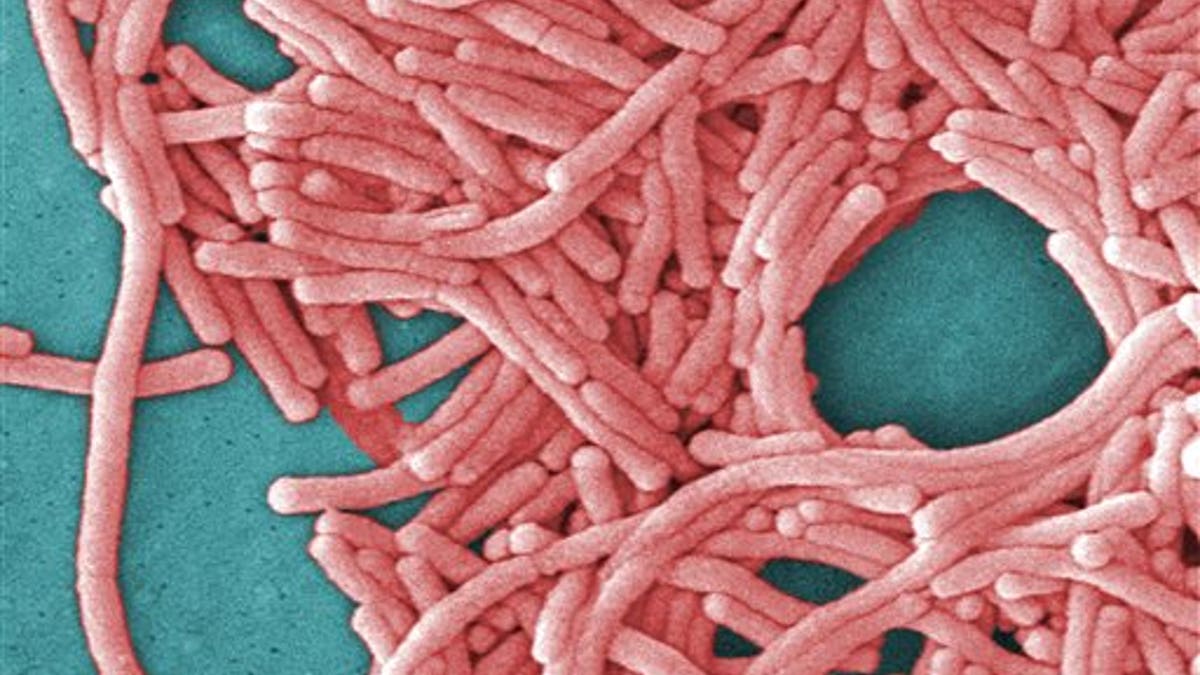
This undated image made available by the Centers for Disease Control and Prevention shows a large grouping of Legionella pneumophila bacteria (Legionnaires' disease). (Janice Haney Carr/Centers for Disease Control and Prevention via AP) .
Legionnaires' disease has been reported in a handful of states this summer, leading to 19 deaths and more than 100 illnesses. The unrelated cases are part of a typical pattern seen with a disease that tends to appear in warm weather and is mostly dangerous for people who already are sick or weakened.
While such outbreaks have become more common in recent years, experts don't know if that's because of better reporting or surveillance, or if the disease, a type of pneumonia, is truly becoming more prevalent, said Dr. Matthew Moore, a medical epidemiologist at the federal Centers for Disease Control and Prevention.
Regardless, he said disease activity this summer is pretty much "par for the course."
Some key questions and answers about recent reports:
WHERE HAS LEGIONNAIRES' DISEASE BEEN REPORTED RECENTLY?
Here's the list:
-In Illinois, an outbreak reported last week at the Illinois Veterans Home in Quincy, an assisted living and nursing home southwest of Chicago, has led to the deaths of seven elderly residents, all with underlying conditions. Another 32 residents have been sickened. Tests were pending Tuesday for other residents. The source has not been identified, said Ryan Yantis, a spokesman for the state's Department of Veterans Affairs.
-In California, six inmates at San Quentin State prison have been diagnosed with the disease since last week; five others are hospitalized with pneumonia-like symptoms and 73 inmates are under observation and being treated for respiratory illness in a prison medical unit, said prisons spokeswoman Dana Simas. Authorities have not found the source.
-In New York, an outbreak in July and August that killed 12 people and sickened more than 100 was traced to bacteria found in an air-conditioning unit cooling tower at a Bronx hotel.
-Two isolated illnesses occurred - one at Illinois' Stateville prison last month, the other in July at West Chester University in Pennsylvania.
-High levels of Legionella bacteria were found last week in the water system at a substance abuse treatment unit in Arizona at the Phoenix Veterans Affairs Health Care System, leading authorities to relocate 20 patients. The bacteria were discovered during routine testing and no illnesses have been reported, spokeswoman Jean Schaefer said.
-A building at a GlaxoSmithKline drug manufacturing plant in Zebulon, N.C. was closed temporarily in August after Legionella bacteria were found in the external cooling towers there; no one was sickened.
WHAT IS LEGIONNAIRES' DISEASE?
The illness is a type of pneumonia caused by bacteria that infect the lungs. Named after a 1976 outbreak among participants of an American Legion convention in Philadelphia, the disease can cause coughs, breathing trouble, fever and muscle aches. The elderly and people with chronic illnesses are most at risk. Antibiotics can treat the disease but it is fatal for between 5 percent and 30 percent of patients, Moore said.
HOW DOES THE DISEASE SPREAD?
The bacteria live in the environment and thrive in warm water. People can get sick if they inhale mist or vapor from contaminated water systems, hot tubs and other typical sources but the bacteria don't spread from person to person. New York's recent outbreak likely spread by wind blowing mist from the hotel cooling tower to surrounding areas, Moore said.
HOW COMMON IS LEGIONNAIRES' DISEASE?
The CDC estimates that between 8,000 and 18,000 people are hospitalized with the disease each year, usually in summer and early fall.
State and local health departments are asked to report cases to the CDC, many cases aren't reported, including many hospitalizations. This year, reports totaled 3,212 through Aug. 16; last year's provisional total is 4,486, but final numbers are expected in a few weeks.
